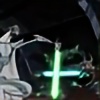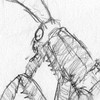HOME | DD
 artbyjrc — Plate skins - Miscellaneous placoderms
artbyjrc — Plate skins - Miscellaneous placoderms

#arthrodire #devonian #extinct #fish #placoderm #ray #shark #silurian #gemuendina #lunaspis #ctenurella #bolivosteus #brindabellaspis #murrindalaspis #romundina #ellopetalichthys #diandongpetalichthys #pseudopetalichthys #kimbryanodus #macropetalichthys #cambellodus #materpriscus #rhamphodopsis #stensioellida #chimaera
Published: 2024-04-20 12:00:27 +0000 UTC; Views: 18546; Favourites: 257; Downloads: 20
Redirect to original
Description
A selection of species from various assorted groups of placoderms. Not to scale.
While the best known placoderms are members of the diverse arthrodires (www.deviantart.com/artbyjrc/ar… , www.deviantart.com/artbyjrc/ar… , www.deviantart.com/artbyjrc/ar… ) and the armoured antiarchs (www.deviantart.com/artbyjrc/ar… ), there were between six to eight additional orders. They included species which were chimaera-analogues with light armour, while others were heavily scaled with defensive spines or flattened bottom-dwellers. Even stranger were several elongate species with large pectoral fins. Placoderms evolved during the Silurian, but remained rare until exploding in diversity during the Devonian. All species died out prior to the Carboniferous period.
* Ptyctodontids (Cambellodus, Kimbryanodus, Materpriscus, Ctenurella, Rhamphodopsis): Strong convergent resemblance to chimaeras with large heads and long bodies. Only placoderm group which were sexually dimorphic (males had hook-like growths on pelvic fins). Many well-preserved species are known from Gogo formation in Australia, including Materpriscus which shows the oldest evidence of viviparous birth.
* Acanthothoracids (Romundina, Murrinadalaspis): Although superficially like chimaeras, acanthothoracids were heavily armoured with large scales, plates and thick spines. Romundina is the first known placoderm to have developed primitive teeth-like tubercles on the tooth blades.
* Brindabellaspids (Brindabellaspis): Previously thought to be a member of the acanthothoracids, Brindabellaspis is notable for it's dorsal placed eyes and prominent duck-bill rostrum. A sensory system in the snout was capable of detecting slight changes of pressure when hunting for prey.
* Petalichthyids (Lunaspis, Diandongpetalichthys, Macropetalichthys, Ellopetalichthys): These were small flattened fish with exaggerated lateral spines in the shape of a crescent moon, dorsally placed eyes and an elongated body.
* Rhenanids (Gemuendina, Bolivosteus): A small group of flattened ray-like placoderms with an armour mosaic of unfused scales and tubercles. They had star-shaped scales lining the mouth, rather than the characteristic tooth plates of other placoderms.
* Stensioellids (Stensioellida) and Pseudopetalichthys (Pseudopetalichthys): Four enigmatic species all found in the Hunsruck strata in Germany. Characterised by a long slim body with light armour and strap-like pectoral fins. Connections with other placoderms is uncertain, with Stensioellida even previously linked to the holocephalians (chimaeras).
Related content
Comments: 29

👍: 1 ⏩: 1

👍: 1 ⏩: 1

👍: 1 ⏩: 2

👍: 1 ⏩: 0

👍: 1 ⏩: 1

👍: 0 ⏩: 1

👍: 1 ⏩: 1

👍: 0 ⏩: 1

👍: 1 ⏩: 1

👍: 0 ⏩: 1

👍: 1 ⏩: 0

👍: 1 ⏩: 1

👍: 0 ⏩: 0

👍: 1 ⏩: 1

👍: 0 ⏩: 0

👍: 1 ⏩: 0

👍: 1 ⏩: 0

👍: 1 ⏩: 0

👍: 1 ⏩: 0

👍: 1 ⏩: 1

👍: 1 ⏩: 1

👍: 0 ⏩: 1

👍: 1 ⏩: 0

👍: 1 ⏩: 1

👍: 1 ⏩: 1

👍: 1 ⏩: 0

















